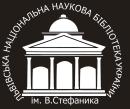

Roman Blikharskyi
PhD in Social Communications,
Research Fellow
of the Research Institute for Press Studies Vasyl Stefanyk National Scientiffic Library of Ukraine in Lviv
(Lviv, Ukraine)
DOI:
FROM «FOUR THEORIES» TO POST-NORMATIVE CRITIQUE: THE TRAJECTORY OF THE NORMATIVE APPROACH TO PRESS STUDIES
The book «Four Theories of the Press» (1956) by F. Siebert, T. Peterson, and W. Schramm launched a normative typology of media systems based on the interrelations between the press, authority, and society. For over sixty years, this approach to media analysis has retained its relevance due to the simplicity of its structure, its philosophical grounding, its scope, and the pertinence of the issues it raises. At the same time, the typology reflected the ideological coordinates of the Cold War era and has been criticized for its political bias and insensitivity to transformations in the global information environment and to local specificities. Nevertheless, it laid the groundwork for normative media discourse and brought attention to the boundaries of press freedom and responsibility.
The aim of this article is to trace the conceptual origins and evolution of the normative approach as a tool for understanding the role of the press in society. The methodology includes a historical-genetic analysis of the intellectual context in which the typology emerged, a historiographical analysis of scholarship on the normative approach, a contextual analysis of its reception in contemporary academic discourse, and a systematic analysis of the historiographical structure of scholarly interpretations.
The findings show that the normative approach developed as a dialectical intellectual trajectory: from attempts to adapt and expand the original typology – through critiques of its historical and ideological limitations – to a rethinking of its epistemological potential and its interactions with critical, post-normative, and historiographical approaches. Despite criticism, the normative approach continues to play a key analytical role by combining empirical analysis with the conceptualization of a media system relevant to a particular type of society, encompassing political, sociological, cultural, and ethical dimensions of press studies.
The novelty of this article lies in its integral analysis of the normative approach to press studies, including the reconstruction of its intellectual and ideological foundations, its contextual emergence, the history of its reception and critique, and contemporary interpretations.
Keywords: normative theories of the press, systemic analysis of the press, media system, history of press theory, political regime.
References
Blikharskyi, R. (2024). Normatyvni teorii presy: Ohliad osnovnykh kontseptualnykh pidkhodiv ta napriamiv analizu [Normative Press Theories: a Review of key Conceptual Approaches and Analysis Directions]. Presoznavstvo, 5, 3–20. DOI: https://doi.org/10.37222/2786-7552-2024-5-1 [in Ukrainian].
Budivska, H. Y. (2018). Funktsii zhurnalistyky v normatyvnykh teoriiakh media ta interpretatsiiakh mediaprofesionaliv [Journalistic functions in normative media theories and interpretations of media professionals]. Obrii drukarstva, 1, 40–48. DOI: https://doi.org/10.20535/2522-1078.2018.1.132818 [in Ukrainian].
Commission on Freedom of the Press. A free and responsible press: A general report on mass communication: Newspapers, radio, motion pictures, magazines, and books. (1947). University of Chicago Press [in English].
Dewey, J. (1954). The public and its problems. Swallow Press. (Original work published 1927) [in English].
Lippmann, W. (1991). Public opinion. Transaction Publishers. (Original work published 1922) [in English].
Mill, J. S. (2001). On liberty. Batoche Books. (Original work published 1859) [in English].
Nordenstreng, K. (1997). Beyond the four theories of the press. In J. Servaes & R. Lie (Eds.). Media & politics in transition: Cultural identity in the age of globalization (pp. 97–109). ACCO [in English].
Oluwasola, O. (2020). The normative theories of the press in the digital age: A need for revision. DOI: https://doi.org/10.2139/ssrn.3678282 [in English].
Ostini, J., & Fung, A. Y. H. (2002). Beyond the four theories of the press: A new model of national media systems. Mass Communication and Society, 5 (1), 41–56. DOI: https://doi.org/10.1207/S15327825MCS0501_4 [in English].
Rantanen, T. (2017). A «crisscrossing» historical analysis of four theories of the press. International Journal of Communication, 11, 3454–3475 [in English].
Rantanen, T. (2024). Dead men’s propaganda: Ideology and utopia in comparative communications studies. LSE Press. DOI: https://doi.org/10.31389/lsepress.wmf [in English].
Siebert, F., Peterson, T. & Schramm, W. (1956). Four theories of the press: The authoritarian, libertarian, social responsibility, and Soviet communist concepts of what the press should be and do. University of Illinois Press [in English].
Szpunar, P. M. (2012). Western journalism’s «Other»: The legacy of the Cold War in the comparative study of journalism. Journalism, 13 (1), 3–20. DOI: https://doi.org/10.1177/1464884911400845 [in English].
Tocqueville, A. de. (1999). Pro demokratyiu v Amerytsi [Democracy in America]. Vydavnychyi dim «Vsesvit». (Original work published 1835) [in Ukrainian].
Vaca-Baqueiro, M. T. (2017). Four theories of the press: 60 years and counting. Routledge. DOI: https://doi.org/10.4324/9781315160566 [in English].
Yin, J. (2008). Beyond the four theories of the press: A new model for the Asian & the world press. Journalism & Communication Monographs, 10 (1), 3–62. DOI: https://doi.org/10.1177/152263790801000101 [in English].
About the journal
Article design requirements
Submissions
Editorial board
2022: Issue 1
2023: Issue 2
2023: Issue 3
2024: Issue 4
2024: Issue 5
2025: Issue 6
